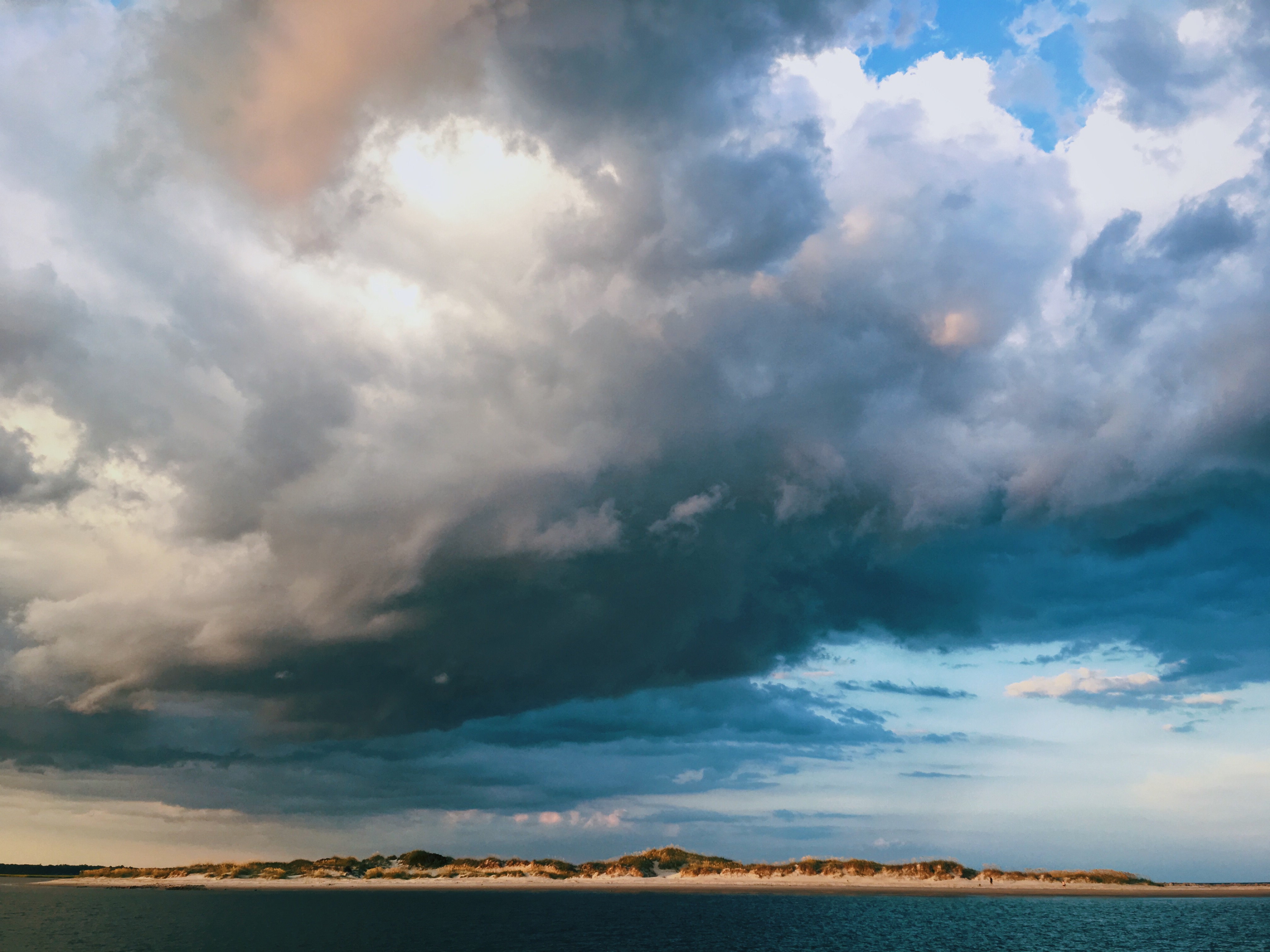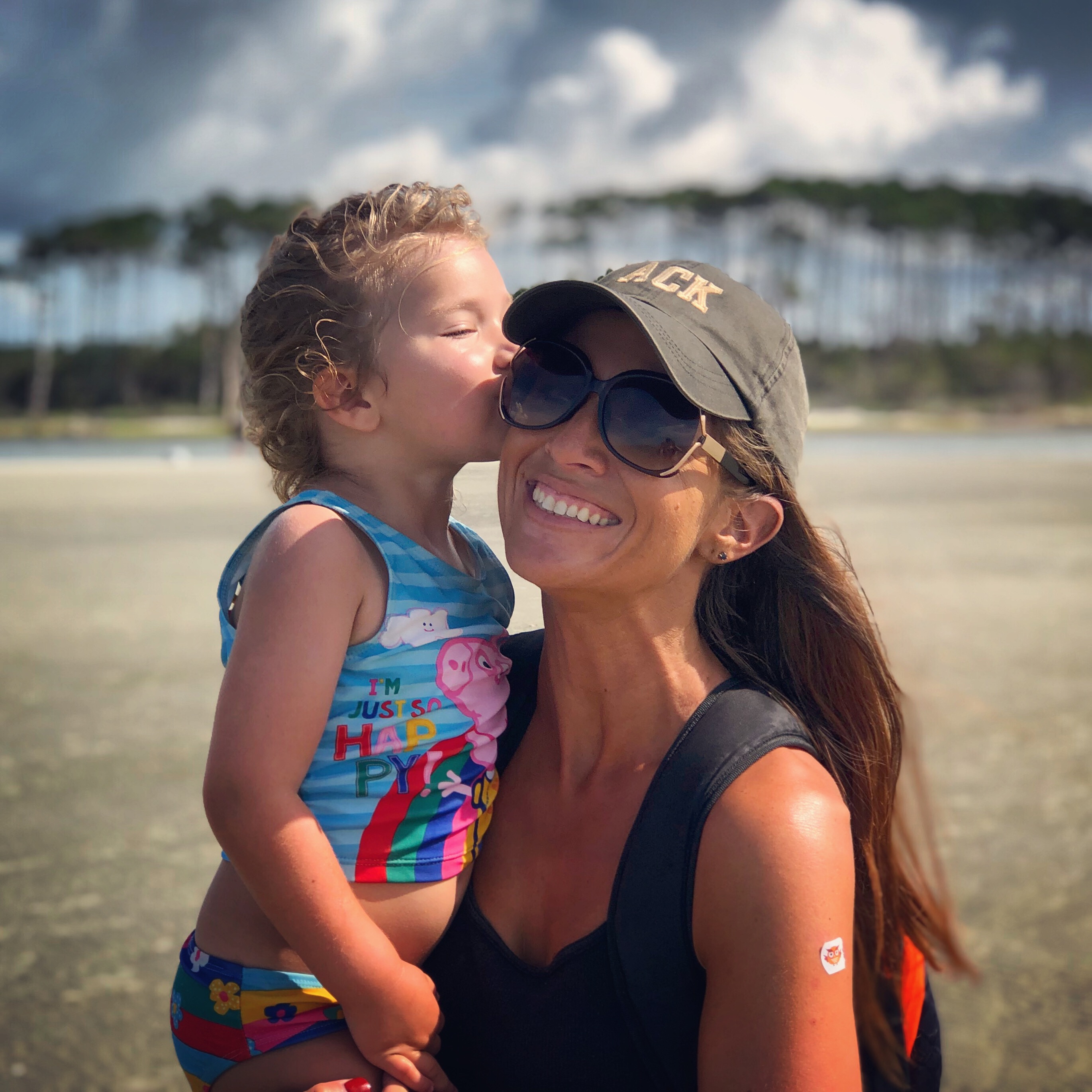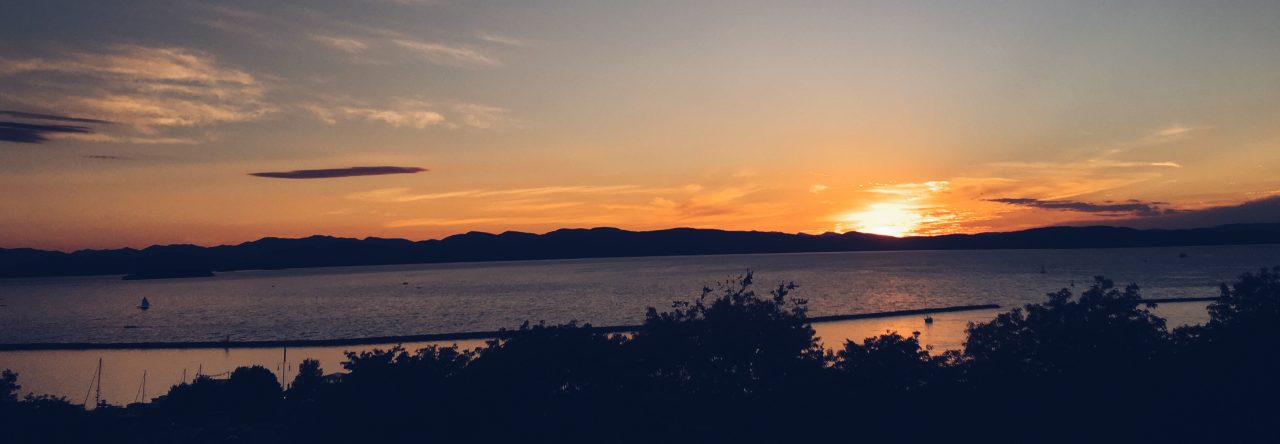LIFE WITH KIDDOS

Another school year beckons.
But first, the beach.
We are in search of dolphins, dozens of us on this small boat bobbing in the ocean. Our eyes are searching across the deep, the ripples and waves a sequined glittering array of light and shadow, all of us desperate to see a protruding fin or the spray from a blowhole.
Four summers here, our little vacation spot in Cherry Grove, and still each trip we find new things to do. This year, we booked a sunset cruise on one of the dozen or so boats we’d spotted tooling about in the ocean earlier in the week. The entire enterprise seemed to abide a classic fisherman’s sensibility, rough about the edges, rules entirely absent. Which is to say, one could smoke on board, which a handful of folks did, or bring a backpack full of snacks and a personal cooler, which we did. There were no regulations, no tucked-in shirts, no safety talks, nothing much beyond the growl of the diesel engines.
There was cadenced, wizened commentary from the captain, though, broadcast over tinny loudspeakers as we trolled the surf in search of dolphins and delivered in a Chesapeake accent. We sat on benches along the sides of the boat. Plastic lawn chairs were arranged in the open decks in the center.
It took an hour or so of motoring up the Intracoastal Waterway to reach the Atlantic. (“We call this the Ditch,” the captain noted in his well-rehearsed monologue.) Creeping along the no-wake zones, we spotted a few restaurants perched along the waterfront, rolling carpets of vibrant grass, and rows of multi-million dollar vacations homes, replete with LED-lit boat docks, palm-lined palisades, glimmering pools, and tiled roofs meant to invoke places more inspiring than Ditch-side mansions. Everyone crowded to one side of the boat to snap pictures of Vanna White’s house as we idled past.
The Intracoastal Waterway, we learned, is a three thousand mile-long liquid highway, designed and built by mankind in its effort to buffer the forces of the sea by providing safe, inland passage. One can float through uninterrupted brackish waters from Massachusetts to Texas. Conceived in the early 19th century and built a hundred years later, it is today used by thousands of commercial and personal craft, including tour boats like ours. On the evening of our cruise, it was entirely docile and still, a light breeze raking across the bow of our ship now and then to stir up the pungent musk of the marsh.

We passed an abandoned shrimp boat wrecked in a storm, rounded Mink and Goat islands and reached the Little River Inlet, where a granite-rock wall augustly absorbed the thrash of waves. Quietly, the crew stacked up the plastic chairs as the sea churned near the inlet’s opening. When we first reached the ocean, the boat pitched mightily from one side to the other. I glanced across the deck to see Thomas and Julia grinning as they bucked up and down. Annie’s eyes grew wide.
She will soon be three and a half years-old–the same age, roughly, that Thomas was when we first started coming here for our beach week. The truth of time is sobering. She dances now in the surf when we spend a day on the beach, flapping her arms as she pretends to be a flamingo, squealing in delight as we play in the sun. Thomas, ever the builder, quickly concerns himself with the sand, scooping piles of it, dredging channels, heaping embankments. Julia, more confident in the water than ever, grabs the foam boogey-board and eventually falls in with a couple of young girls she’d met, riding waves and giggling.
This last image is a point of departure for my heart–here we are, now, in the space in which our children begin to play apart, joining the fluid social groups that beaches inspire. We are not clan-style vacationers, packing dozens of children (built-in playmates!) and family members into houses with 8 bedrooms. Our children have to venture across family lines in search of company.
It isn’t only Julia who can so easily befriend others. Annie regularly wanders up to fellow strangers, children and teenagers and grown-ups alike, explaining her fantastical and deep story of how she is a bossmingo–toddler for the word “flamingo”–and that her bossmingo parents died in a fire and now she lives at the beach. It is amusing to watch grown-ups faces as they try to make sense of this.
And that is mostly what I do–stand a dozen yards away or so and watch as our children connect and bond with people they’ve never met before and will never see again. Their ability to so deftly navigate these porous social boundaries seems so impressive to me. For someone whose very career centers around relationship building, I often feel deeply introverted. Yet Annie seems indefatigable when approaching others. At one point, she simply joined another family’s encampment, sitting in the sand with two other toddlers her age, delighted to find such well-matched company. She played contentedly for probably twenty minutes.
At one point, I lost sight of Julia in the ocean. She had been boogey-boarding with the other girls. I felt a surge of anxiety–I am not a fan of the ocean, and I do not trust myself in its grasp. I think of the cannonball jellyfish we spotted the day before from the pier. I think of riptides. The ocean can quickly and dispassionately kill me, I remember as I wade into the waves. I don’t know why I think this way.
But soon I see her, her blond ponytail sticking out of a pink Carolina Panthers baseball cap, bobbing about with the girls, their legs trailing behind their boards. She’s nearly up to her chest in water, and I feel my own chest tighten, my impulsive reaction to bring her in. Somehow I manage to swallow my own fear, considering the social price of being the overbearing father, salting my own daughter’s game* as she navigates the early lessons in making quick friends.
This year, when I see the packs of children of various ages wandering about, I pay closer attention. It won’t be long before our children reach the age in which they will want to wander off unattended. The pack will soon call.

Later in the week, I took us to one of the waterside shack restaurants we’d spotted from the boat in search of fresh seafood. It would be a late supper–the wait list was long, but I took that as a good sign. Annie slept on my lap, exhausted from a day in the sun. Eventually, we were seated at a table set beside floor-to-ceiling windows–okay, they were sliding doors–looking out at the water. Next to us was a family of five that seemed to match ours, only everyone looked about seven years older. While Julia and Thomas played checkers on my iPhone, I watched the kids at the next table as they joked and horseplayed, as their parents shared conversation between them, as the children eventually got up to hang out outside away from them. The sun lit the partly cloudy sky on fire as it set. Everyone pulled out their phones to document the moment.
Next week Kel will return to work for her nineteenth year teaching elementary music. In another week, Julia will enter the third grade and Thomas will start first grade and Annie will go to the preschool class that I swear we just dropped Julia off at. Grad school awaits. August beckons.
Somehow we make the entire three-hour dolphin tour without ever seeing any dolphins. But the kids are happy and laughing, and the sunset lit up the marsh grass in brilliant green, and sitting on the back rail of the boat with my wife and a cold can of beer is more than enough. No one needs it to be perfect, not when it’s already this good.






Jenneffer Sixkiller
In arapt, awaiting your next piece